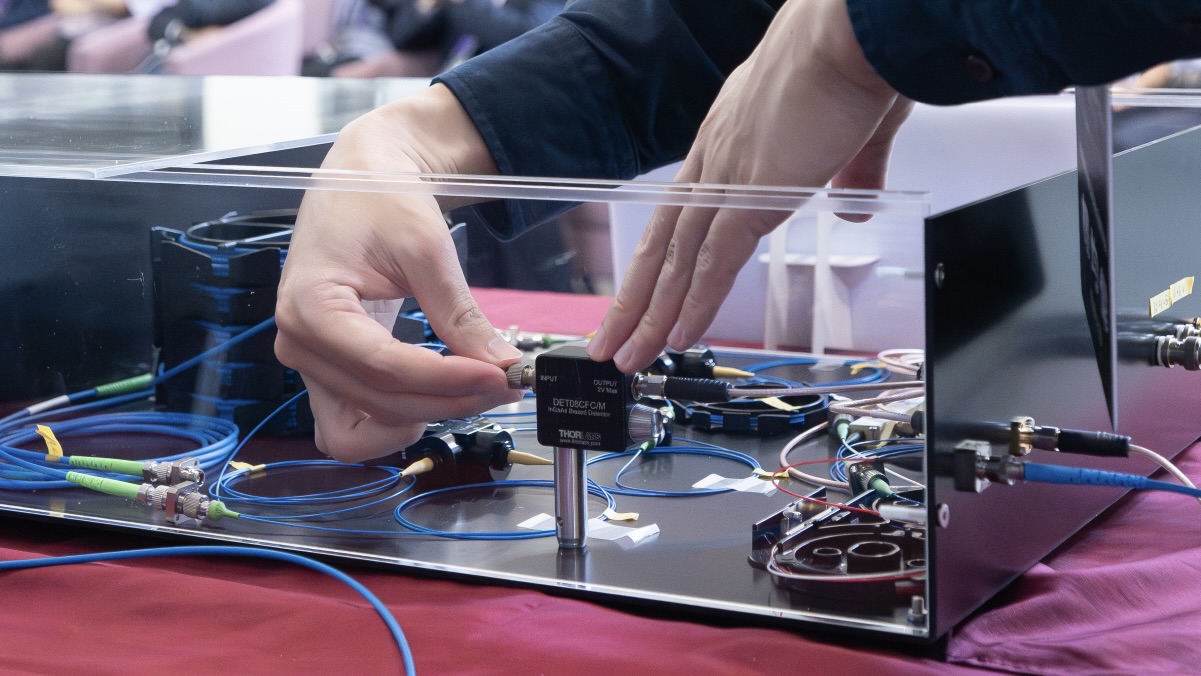Scientists build the smallest quantum computer in the world — it works at room temperature and you can fit it on your desk
The smallest machine of its kind in the world uses a single photon as its qubit and it can perform calculations without needing the cumbersome equipment to cool it down to near absolute zero.

Scientists have built the smallest quantum computer in the world. It is the size of a desktop PC and can work at room temperature.
The machine is powered by just one photon, or light particle, embedded in a ring-shaped optical fiber, the scientists wrote in a study published Sept. 3 in the journal Physical Review Applied. The machine is a proof of concept and can complete mathematical operations such as prime number factorization — such as 15 = 5 x 3.
Many quantum computers and processors, including IBM's 1,000-qubit Condor chip, are built using superconducting qubits. But to tap into the laws of quantum mechanics and calculate using quantum superposition — which allows the qubit to exist in multiple states simultaneously — they must be cooled to near absolute zero. This requires complex equipment that typically takes up at least the size of a room.
Photons have long been proposed as an alternative to superconducting qubits, in a field known as "optical quantum computing." In February, scientists suggested that building qubits from a single laser pulse could let them make a stable quantum computer at room temperature, for example.
Related: 'World's purest silicon' could lead to 1st million-qubit quantum computing chips
In the new study, the scientists built a machine that can process calculations at room temperature. And because it doesn't need to be chilled, it is the size of a typical desktop PC. The quantum computer stores information in "32 time-bins or dimensions" within the wave packet of a single photon, study lead author Chuu, Chih-sung, professor of quantum optics at the Tsing Hua University in Taiwan, said in a translated statement. This is a world record for the number of computing dimensions that can be accessed by a single qubit, he added.

Unlike superconducting qubits, photons can maintain a stable quantum state at room temperature. A quantum machine that uses photons consumes less energy and is cheaper to run than. It is also more efficient to run than systems using trapped-ion qubits — charged particles suspended in free space by electromagnetic waves — which require complex lasers to precisely tune their quantum state.
Get the world’s most fascinating discoveries delivered straight to your inbox.
Optical quantum computers with hundreds of photons already exist. But because photons appear probabilistically — meaning "they are there one second and disappear the next" — they are difficult to corral in large numbers, Chuu said.
Instead, Chuu and his team compressed all the information into one stable photon. He likened this work to transforming a bicycle that can carry one person into a 32-car train that can fit a huge number of passengers. The next steps are to continue improving the storage capacity of a single photon so that it can process even more complex calculations, he added.
Given the machine uses a photon as its qubit, it could easily be integrated into future quantum communication networks that use light to transmit data, or with other light-based classical computing systems, the scientists said.

Keumars is the technology editor at Live Science. He has written for a variety of publications including ITPro, The Week Digital, ComputerActive, The Independent, The Observer, Metro and TechRadar Pro. He has worked as a technology journalist for more than five years, having previously held the role of features editor with ITPro. He is an NCTJ-qualified journalist and has a degree in biomedical sciences from Queen Mary, University of London. He's also registered as a foundational chartered manager with the Chartered Management Institute (CMI), having qualified as a Level 3 Team leader with distinction in 2023.


